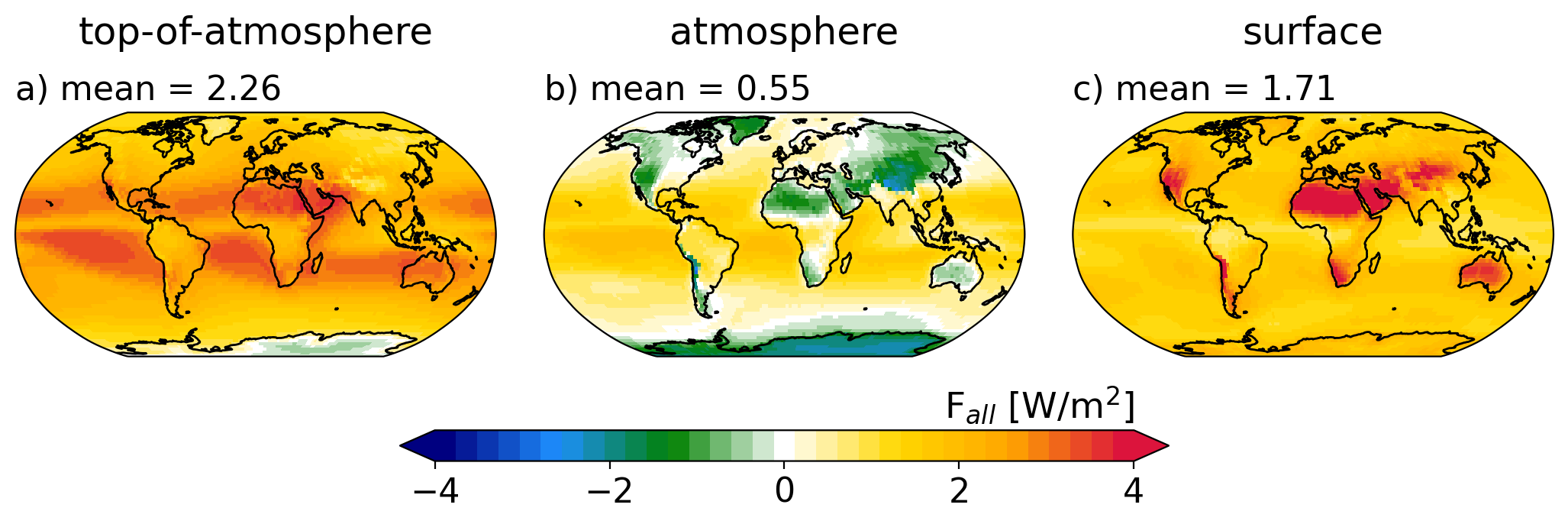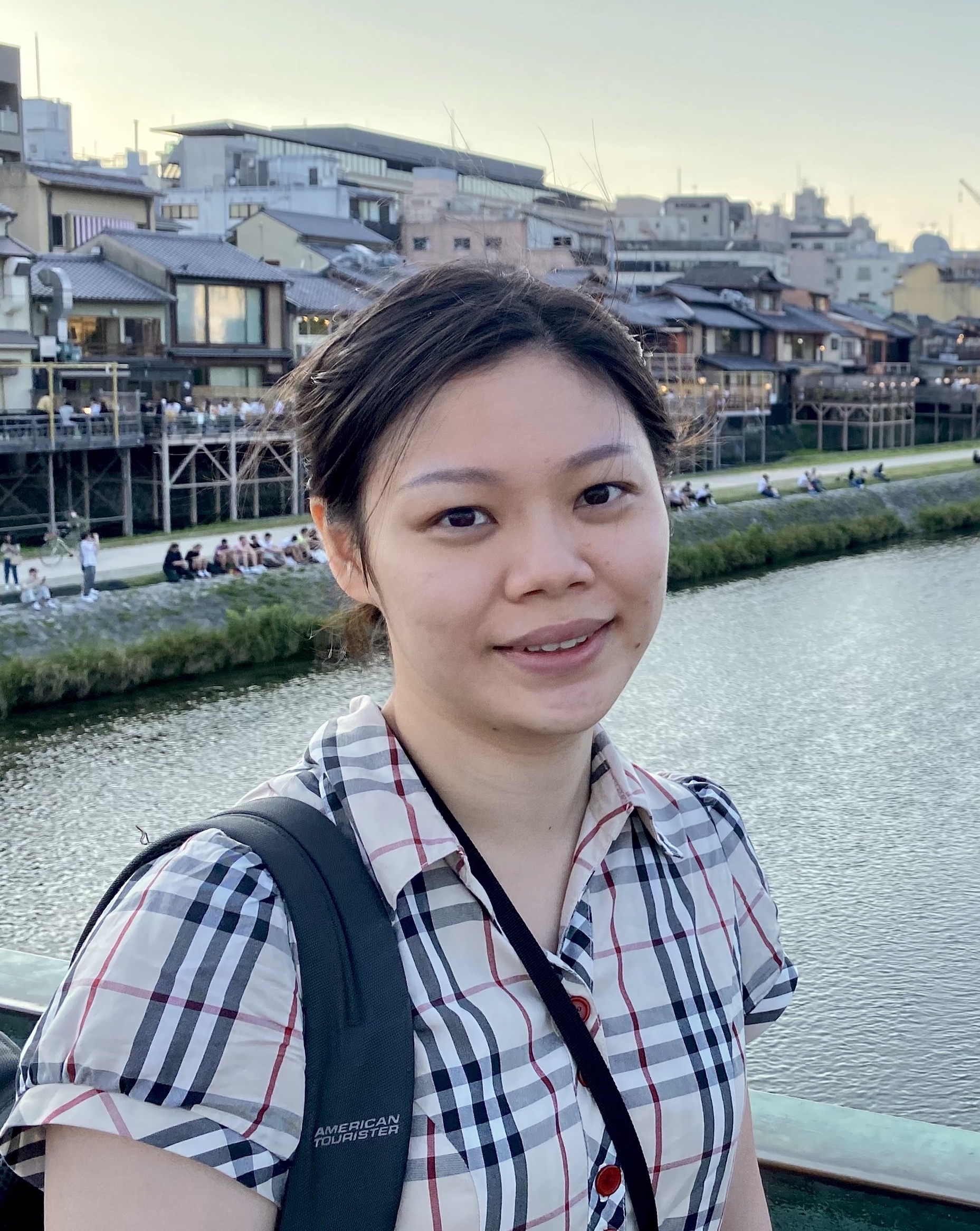Research
I plan to include brief notes of past projects retrospectively in the near future.
A minimal recipe for CO2 radiative forcing
CO2 increases drive anthropogenic climate change by adding energy flow (so-called radiative forcing) into the Earth system. Even though CO2 distribution is rather uniform spatially, its radiative forcing is influenced by various environmental factors and is thus highly inhomogeneous. These spatiotemporal variations in CO2 forcing have distinctive implications on large-scale circulation, poleward energy transports, and regional climate changes. However, climate models typically do not distinguish between the radiative perturbation caused by CO2 or environmental changes, leading to uncertainties in isolating the forcings, adjustments, and feedbacks.

The figure above [based on Chen et al. (2023)] illustrates the forcing of instantaneous CO2 doubling calculated with reanalyses at different parts of the atmosphere under all-sky conditions. An assessment of the forcing variability based on reanalyses provides a benchmark for climate models to reference. Through comprehensive analyses of CO2 opacity across the infrared spectrum, we develop simple regression models that effectively predict CO2 forcing using only surface temperature, stratospheric temperature, column water vapor, and cloud radiative effects. Each predictor used here encapsulates forcing originating from distinct parts of wavelength-varying absorption properties. Given this, we anticipate that our established analytical framework can be extended to assess the forcing from other greenhouse gases.
This project is published as Chen et al. (2023) in the Journal of Climate.
